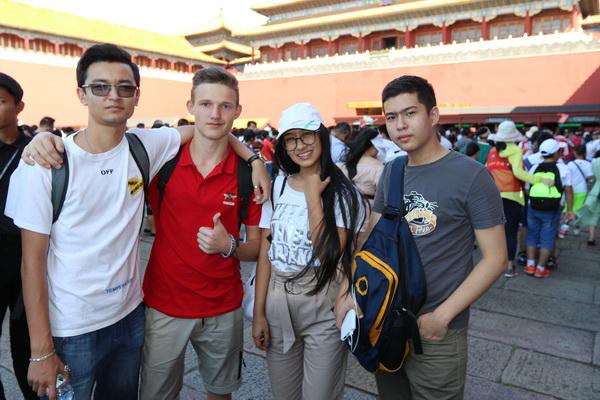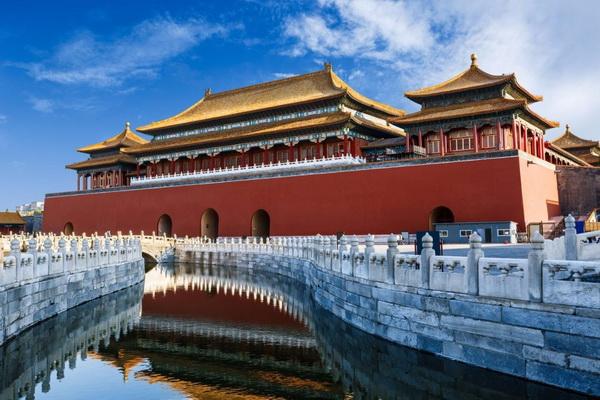Tashkent, Uzbekistan (UzDaily.com) -- The Embassy of the People’s Republic of China in Uzbekistan held an annual campaign in August 2019 on bilateral relations between the countries. A group of students and schoolchildren in Tashkent, studying Chinese language, paid a friendly visit to the People’s Republic of China.

For many, a trip to China is the dream of a lifetime. The dream to learn an ancient language that is still spoken by more than a billion people is an ambitious goal that you can start to realize in China, while combining an exciting excursion program, relaxation, meeting new people and, of course, a complete immersion in the language culture. The trip participants received unforgettable impressions of exotic culture, history and beautiful nature - all this makes China a unique country.

Schoolchildren from Uzbekistan (30 students participated in the program), according to them, liked the sights of Beijing and Xi’an and meetings with prominent historians and cultural figures of the country.
Tour participants visited cities such as Beijing and Xi’an, went on excursions on the Great Wall of China, saw with their own eyes terracotta warriors, visited the emperor’s palace and in many other places.
The Great Wall of China
There is no other such construction in the world that would cause so much interest among scientists, tourists, builders and astronauts as the Great Wall of China. In the story of this grandiose building, we will try to reveal secrets, solve riddles and briefly give answers to many questions about it: who built it and why, from whom it defended the Chinese, where the most popular section of the structure is located, is it visible from space. the great Wall of China.
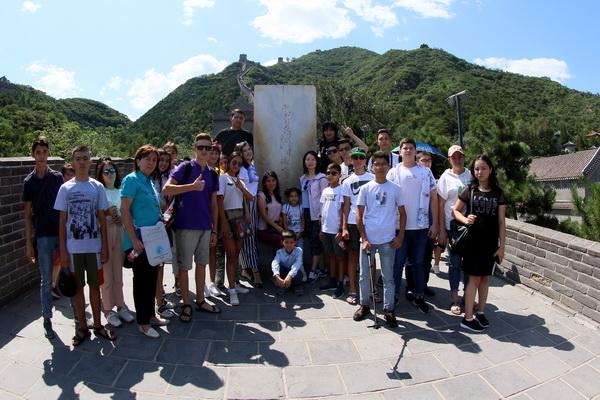
During the period of the Battle of the Kingdoms (from the 5th to the 2nd century BC.), Large Chinese kingdoms absorbed smaller ones using aggressive wars. So the future united state began to form. But while it was fragmented, separate kingdoms were subjected to raids by the ancient nomadic people of the Huns, who came to China from the north. Each kingdom built protective fences on separate sections of its borders. But ordinary land served as the material, so the defensive fortifications wiped off the face of the earth and did not reach our times. The Great Wall of China in China.

Emperor Qin Shihuandi (III century BC), who became the head of the first united kingdom of Qin, gave rise to the construction of a defensive wall in the north of his domain, for which new walls and watch towers were erected, combining them with existing ones. The purpose of the erected buildings was not only to protect the population from raids, but also to indicate the borders of the new state.




A fifth of the entire population of the country was involved in the construction of the Great Wall of China, which is about a million people in 10 years of basic construction. Peasants, soldiers, slaves, and all criminals sent here as punishment were used as labor to construct the long wall.


Considering the experience of previous builders, not blocks of earth, but stone blocks were laid in the base of the walls, sprinkled with soil. Subsequent rulers of China from the Han and Ming dynasty also expanded the line of defense. Stone blocks and bricks, bonded with rice glue with the addition of slaked lime, have already been used as materials. It is precisely those sections of the wall that were built during the Ming Dynasty in the XIV – XVII centuries that are well preserved.
Beijing Aquarium
On the territory of the Beijing Zoo, an oceanarium was successfully located, tickets to which are bought at the ticket office of the zoo at the entrance. The cost of this pleasure is 120 yuan per person. Children below 1.2 meters tall again have the advantage of being admitted to the aquarium free of charge, but only strictly accompanied by an adult.
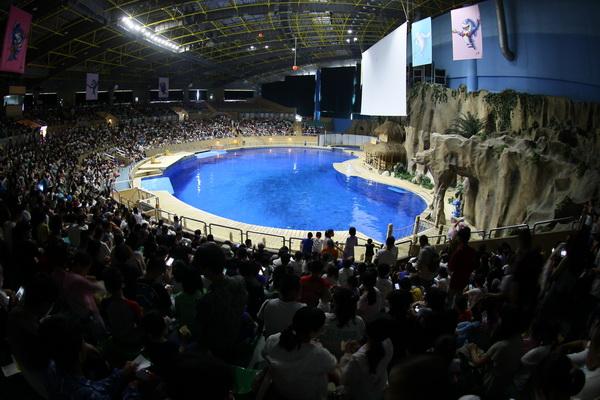
In terms of size, the building of the aquarium resembles a large sports complex consisting of several large halls. In one of them is an amphitheater, which has a pool instead of a stage. It is stylized as a sea lagoon, and it hosts performances of trained dolphins and fur seals.
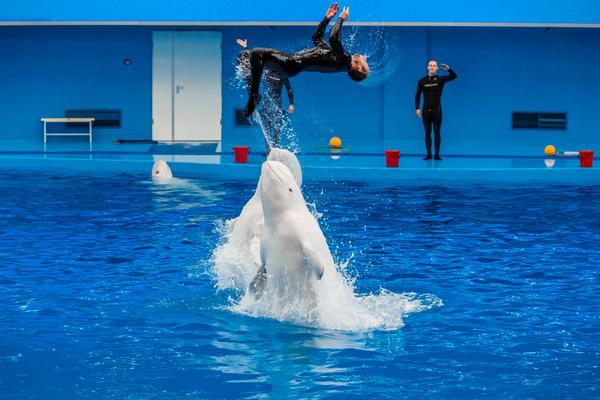
You can also show your children an aquarium with sharks and stingrays (the viewing glass reaches a size of 7 by 4 meters). Another reservoir, for example, is an artificial copy of a coral reef. A glass inclined tunnel with an escalator passes through it. There you can watch such outlandish fish as stingrays, groupers, moray eels, large turtles, tuna, as well as other inhabitants of the deep sea.
Shaanxi History Museum
Shaanxi Province is the birthplace of ancient Chinese civilization. The city of Xi’an was the capital of the Chinese Empire during the reign of thirteen dynasties, which lasted more than 1100 years. Therefore, the ancient history of Shaanxi is to some extent the ancient history of China. Shaanxi History Museum, showing ancient civilizations, is located in the southern suburbs of Xi’an, northwest of the Great Goose Pagoda. The museum was opened to visitors in 1991, with a peculiar architecture, interior decoration and an excellent collection, it quickly earned the image of a top-class museum.
Covering an area of 65,000 square meters, the museum is a large complex of buildings imitating the style of architecture of the Tang Dynasty (618-907). In the center, there is a two-story main pavilion around which secondary pavilions of various sizes are distributed. The predominant black, white and gray colors give the building a rustic charm. To ensure the preservation of cultural relics, the museum is equipped with a central air conditioning system and a multifunctional lighting system.
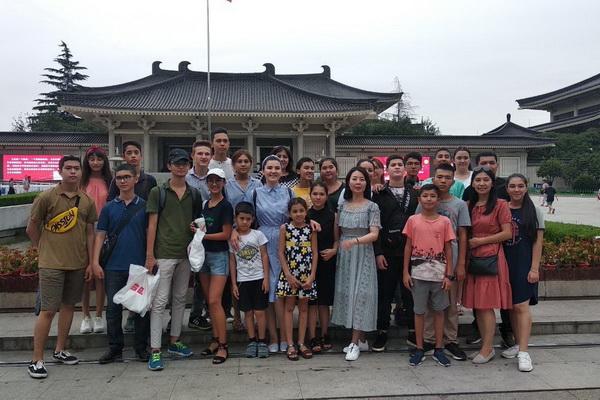
The main exhibition hall consists of three halls. In Hall No. 1 on the ground floor there are exhibits dating from the period from 1.7 million years ago to 206 BC to the Qing Dynasty (221 BC - 206 BC). Here you can see the rough stone tools used by primitive people, pottery, bronze sacrificial vessels, weapons and terracotta figurines. Exhibition Hall No. 2 on the second floor tells about the events from 206 BC to the Han Dynasty (206 BC - 220 AD) to 589 AD to the period of the Northern and Southern Dynasties ( 386-589 AD). Paper production, one of the most significant inventions of China, as well as other important historical events are depicted in scroll painting. Exhibition Hall No. 3 on the second floor is dedicated to the dynasties: Sui (581-618 CE), Tang (618-907 CE), Song (960-1279 CE), Yuan (1271-1368 CE), Ming (1368-1644 CE) and Qing (1644-1911 CE). Here is a model of the great city of Changan (Xi’an) of the Sui and Tang dynasties, shiny silver and gold dishes, clay figures and high-quality porcelain.

Terracotta Army
In March 1974, the Chinese peasants digging a well accidentally discovered the now legendary Terracotta Army - from 7 to 9 thousand clay warriors weighing 135 kilograms each, made of burnt clay and painted. The creation of such a unique army is connected with the belief of the Chinese in the afterlife and the tradition of burial, which existed before our era, together with the ruler of the country of his entire palace and subjects.
According to various estimates, from 7 to 9 thousand clay warriors "consists" in the Terracotta Army.

The army of terracotta warriors was buried with Qing Shihuandi, his ruler and the first emperor of China in 210-209 BC. e., and should probably testify to the progressiveness and humanism of the ruler, since his predecessors preferred to bury a living army with them in order to settle down in the other world.

Today, the entire clay army is stored in crypts 1.5 km from the burial place of its ruler.
It is believed that the facial features of each of the warriors were copied from real living people.

All this army is only part of the grandiose project of the magnificent tomb of the Chinese emperor, about 700 thousand people worked on its construction. Here, on the ground, a whole miniature China was built with its rivers, mountains and palaces. Thus, the emperor seemed to continue to rule his country even after death.
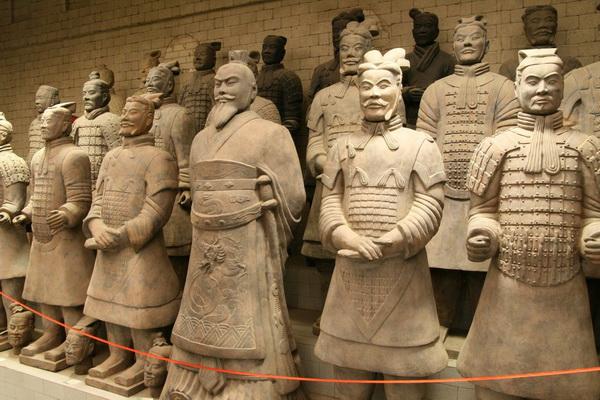
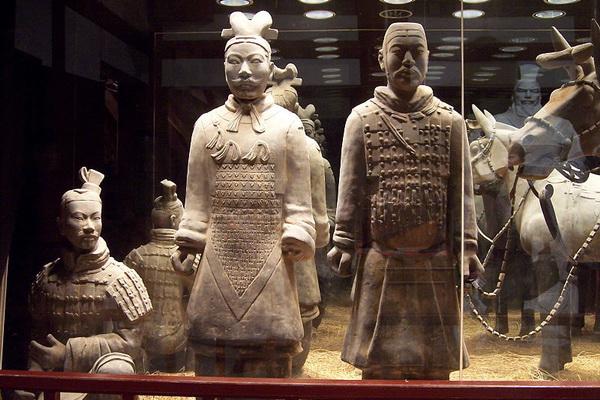
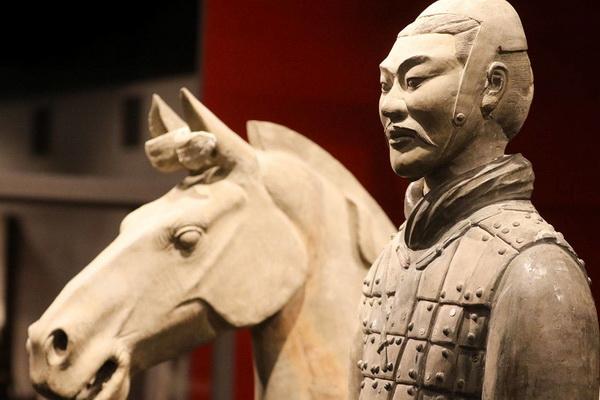

.jpg)
Forbidden City Gugong
According to legend, in the palace of the Heavenly Emperor there are ten thousand rooms. The palace of the son of Heaven, as the emperors of China called themselves, should be at least a little more modest so as not to overshadow the heavenly ruler. So it occupies an area of 72 hectares, on which there are about eight hundred buildings and a total of 9,999 rooms.
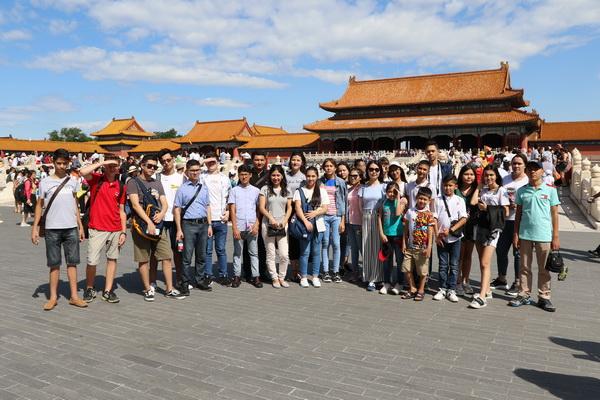
In fact, there are, of course, fewer of them - obviously, it just seemed like the Chinese love for the number nine.
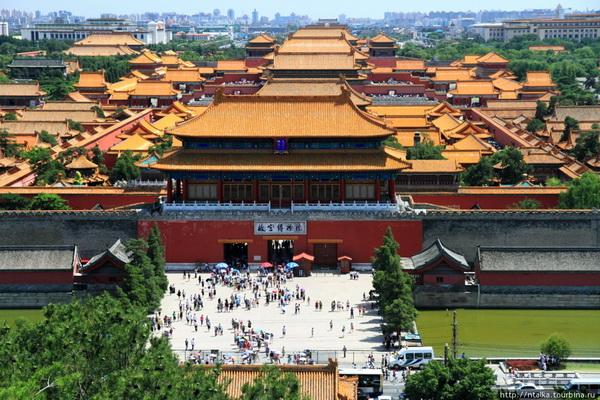
The city is surrounded by a high wall and a moat filled with water - the Jinshuihe Canal (Golden River). Several bridges were thrown across the ditch - the central two were intended only for members of the imperial family, the next - for the highest military and civil officials, and the extreme ones were called public and any inhabitant of the Forbidden City could pass on it, regardless of its rank and origin.
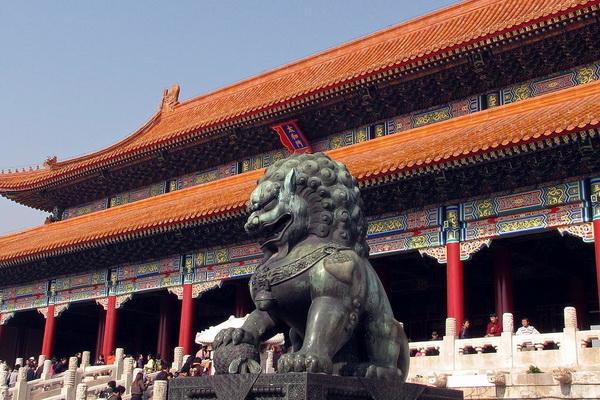
On the territory of the Forbidden City, there are many beautiful and elegant buildings, pavilions, gazebos, galleries, as well as lakes, river, gardens. And their names, as a rule, are not inferior to grace in appearance - for example, the pavilion of the Contact of Heaven and Earth, the Gate of heavenly purity or the Arbor, from where the arrival of spring is visible.
The Forbidden City was rebuilt several times after fires, destruction and robberies. However, they tried to reproduce its appearance with maximum accuracy, so something that we can see there now is not too different from the original form of the palace.
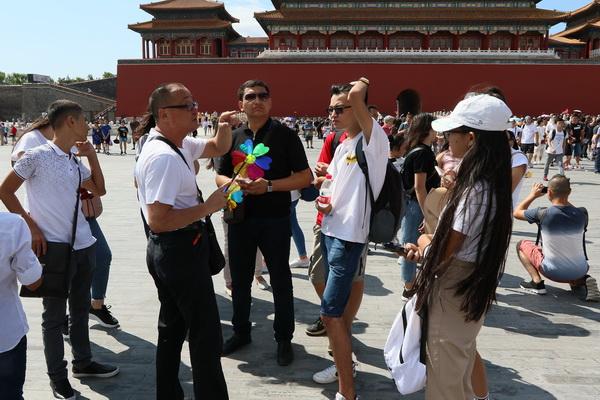
The collection of valuable exhibits is replenished year after year, has already reached a million. The main part of the exposition consists of paintings, books, bronze items, imperial clothes and jewelry, made with amazing skill.
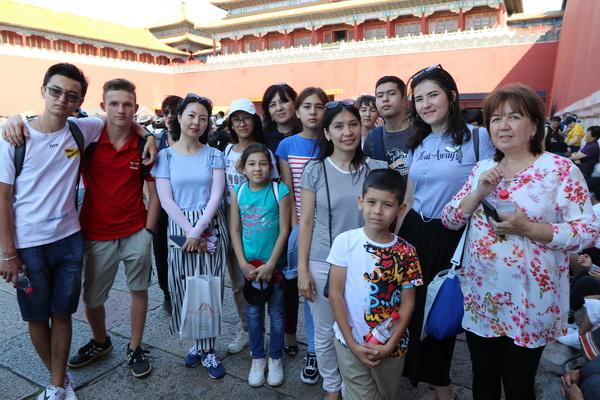
The forbidden city is divided by a central axis, eight kilometers long. In the center stands the Taihegyan Pavilion (Hall of Supreme Harmony), whose height almost reaches forty meters. For many centuries, it remained the tallest building in Beijing, because during the empire it was not allowed to erect buildings above it - the ban did not apply only to temples. In the center of the pavilion is the Throne, a symbol of the emperor’s power on earth.
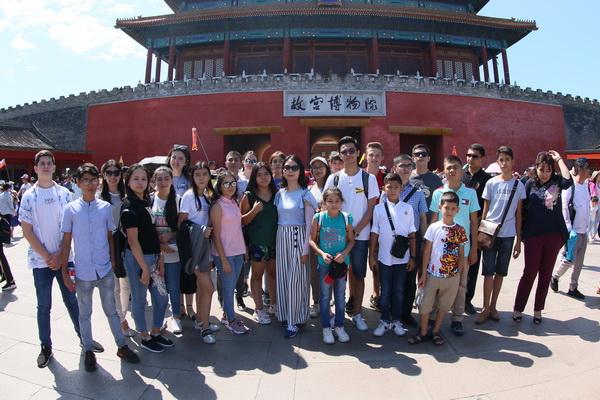
Also, the trip participants unanimously agreed that cultures of different eras harmoniously coexist in China. “I was very surprised by traditional China, and the communist China of the last century, and modern China. But even more interesting is that all three of these different China can be on the same street. Buildings of different times can be very close. There is an old dialogue between the old and the new in China.”

Participants admitted that this journey strengthened their love for a country with which they had previously been familiar only from textbooks. “It can be seen that the Chinese people are very fond of their traditions. Love for your culture, but at the same time the desire for a new one cannot but touch you. I gave my heart to China. I am very glad that I visited this trip, the organization was at the highest level."


